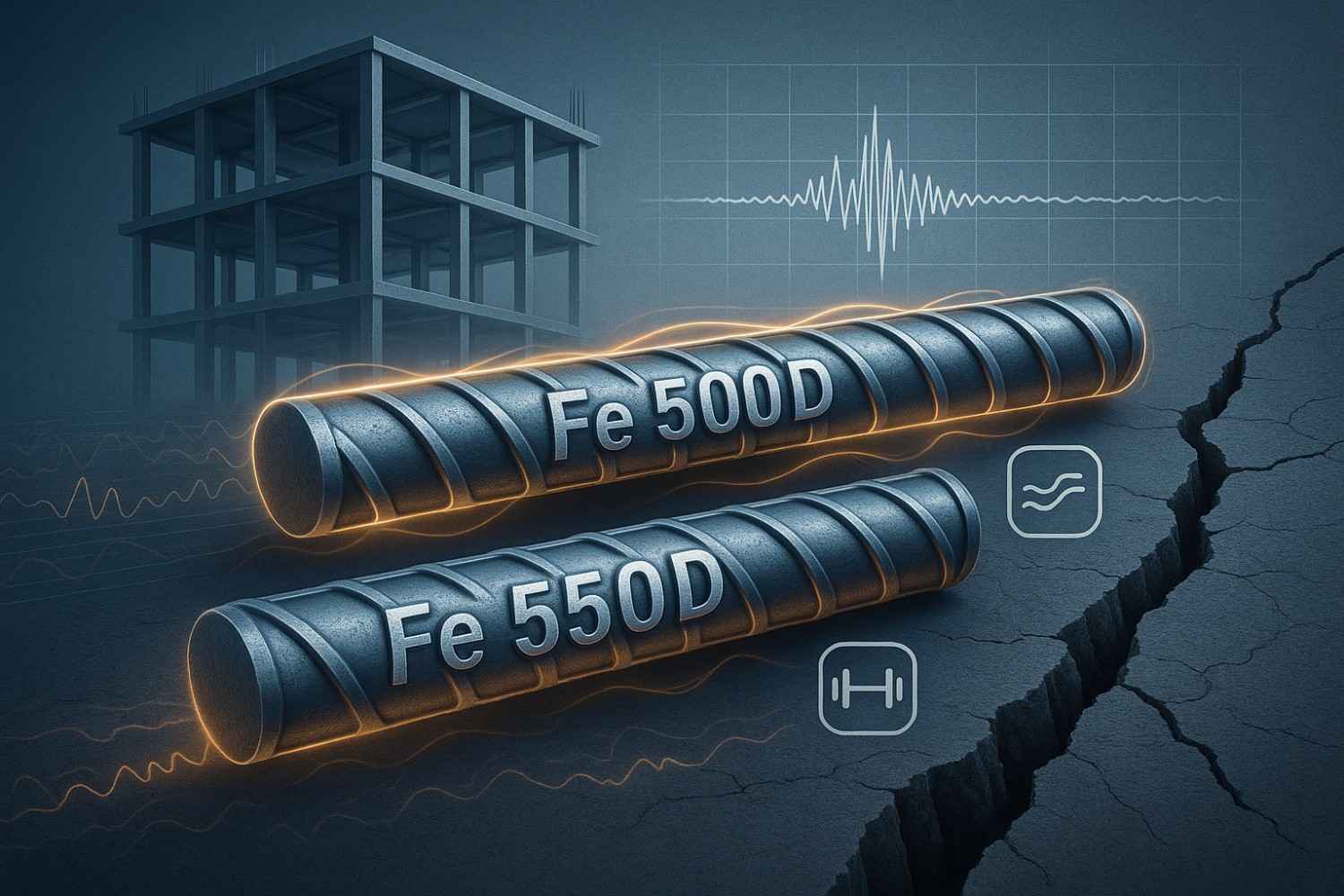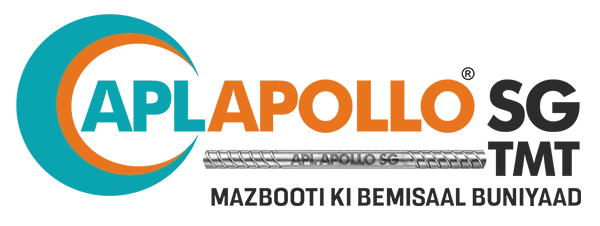
In construction, strength alone doesn’t guarantee safety. The secret lies in ductility – how well steel bends under pressure without cracking. Today we explore the science behind Fe 500D and Fe 550D TMT bars, uncovering why these ductile champions are essential in earthquake-prone areas. Expect real-world examples, plain-language explanations, and why APL Apollo SG Infra bars are the go-to choice for engineers and developers building safer, smarter structures.
“Explore our full range of TMT Bars”
- Setting the Scene: Ductility vs. Strength
Imagine two steel bars encountering the same force:
- One snaps like a brittle twig (high strength, low ductility).
- The other bends and flexes like a sturdy branch (moderate strength, high ductility).
In civil engineering, that flexibility matters. Ductility allows a structure to absorb dramatic forces – like those from earthquakes – without failing catastrophically.
⚡ Real Project Example: Uttarakhand Safe Septic Shelter
In a remote Uttarakhand shelter near a seismic fault line, engineers originally planned Fe 500 bars. But after a tremor simulation revealed potential cracking, the structural team switched to Fe 500D, which offers >14% elongation, enabling the structure to flex without breaking. The result: a facility that stayed standing – and safe.
- Fe 500D & Fe 550D: More Than Just High Grades
Let’s compare:
Grade | Yield Strength (N/mm²) | % Elongation (Ductility)* | Ideal Use-Cases |
Fe 500 | 500 | 12–14 | Standard residential/commercial builds |
Fe 550 | 550 | 10–12 | High-rise, industrial load-bearing |
Fe 500D | 500 | ≥14–16 | Seismic zones, infrastructure projects |
Fe 550D | 550 | ≥13–15 | Bridges, flyovers, metro & tunnels |
*Values indicative—refer to IS 1786 for exact standards.
While Fe 500D and Fe 550D offer similar strength to their non-D counterparts, the ‘D’ grades are significantly more elongate – helping structures flex, not fracture.
- Why Ductility Is Non-Negotiable in Earthquake Zones
Concrete is rigid – it cracks under pressure. Reinforcement bars, therefore, must flex instead of fail. Ductile steel ensures a structure can bend with the quake, preserving integrity and buying precious time for evacuation.
🔍 The Physics of Ductility:
- Measured via elongation tests (bars stretched until they break).
- Fe 500D consistently meets 14-16% elongation – over 2% higher than Fe 500 – in lab and field trials.
- This enhanced flexibility means the difference between a minor crack and a catastrophic collapse.
- Project Highlight: Pune Metro Tunnel
During the Pune metro tunnel project (2023), project engineers specified Fe 550D for critical junctions and column joints. Underground seismic studies showed tremors of magnitude 5.8 possible in the region. Fe 550D’s combination of tensile strength and ductility meant the tunnel segments could absorb lateral movement – avoiding brittle failure. To date, the tunnel has performed admirably during ground-motion tests.
- How APL Apollo SG Infra Stands Out
While you can purchase generic Fe 500D or Fe 550D bars, APL Apollo SG Infra makes safety measurable and repeatable:
📌 In-House Laminar Cooling:
Produces consistent microstructures needed for ductile performance under stress.
📌 Batch Testing & Traceability:
Every batch comes with Mill Test Certificates (MTC), inline lab results, and traceable heat numbers – vital for large projects or compliance audits.
📌 Built for Infrastructure:
Used in highways, bridges, railway terminals and coastal defense projects from Goa to Visakhapatnam – where Earth’s movements are a fact of life.
- What This Means for Your Next Project
🛠 Homebuilders & Contractors:
Even small tremors create micro-cracks in conventional bars. Fe 500D offers peace of mind – even below major seismic zones.
🔧 Structural Engineers:
Using Fe 550D lets you design slimmer structures without compromising safety. Less steel, more flexibility – cost-efficient and future-ready.
🏗 Developers & Infrastructure Planners:
Mandatory compliance with national seismic code tells you Fe 500D/D is not an option – it’s a necessity.
- Practical Tips When Specifying D-Grade Bars
- Double-check your drawings – ensure critical sections use Fe 500D or Fe 550D.
- Include batch/heat requirements – ask your supplier for test certificates with visible heat stamps.
- Don’t mix grades – especially in columns or load-bearing members.
4.️ Always ask “Are these APL Apollo SG Infra bars?””- for proven performance and compliance.
- To revisit ductility basics, see How TMT Bars Are Tested → Rigorous testing ensures ductile strength in every bar — as explored in our in-depth guide on how TMT bars are tested.
- For earlier insights on buying quality steel, replay Common Mistakes to Avoid When Purchasing TMT Bars.
- And remember: proper tying matters – see our blog on MS Binding Wire → binding wire ensures proper cage formation
- The Final Word: Building Resilient Futures
Ductility isn’t a buzzword – it’s structural insurance. When earthquakes or heavy loads visit your project, Fe 500D and Fe 550D don’t just meet codes – they safeguard lives.
Investing in APL Apollo SG TMT Infra bars is more than a materials choice; it’s a commitment to resilient construction, smarter building practices, and future-ready infrastructure.
📘 Up Next in the Series:
“Seismic Design 101: How Foundations & Soil Work With Ductile Reinforcement”
- Ready to Source Fe 500D / Fe 550D TMT Bars?
Whether you’re a contractor, builder, or an individual planning your next residential or commercial project, choosing the right grade of TMT bars is just the beginning. To ensure timely supply, genuine products, and full technical support, it’s important to buy directly from trusted channels.
👉 Get in touch with our team or find a dealer near you.




Pingback: Seismic Design 101-Foundations, Soil & Ductile Reinforcement
Pingback: TMT Bar Rust Prevention Tips | SG TMT for Long-Lasting Strength